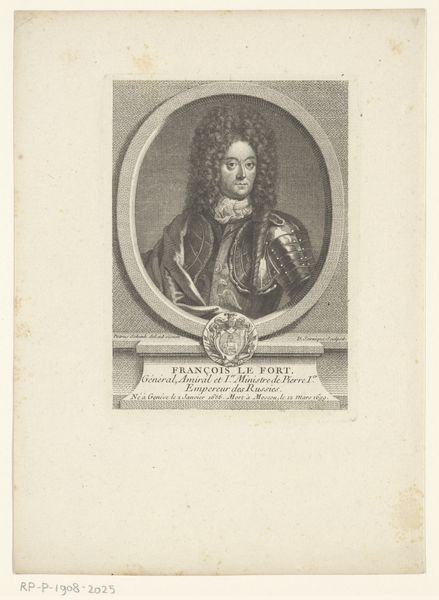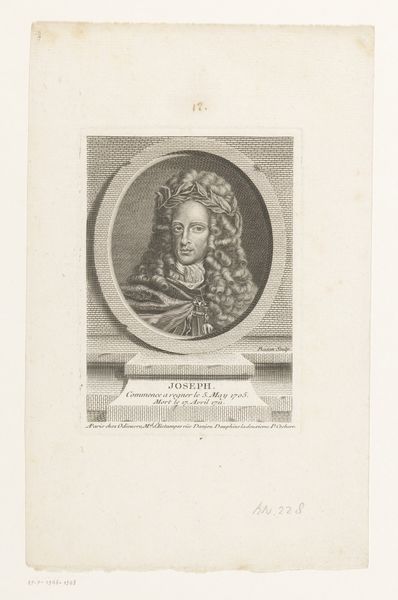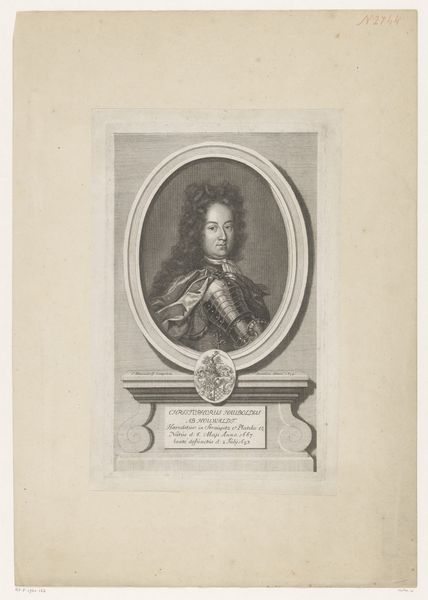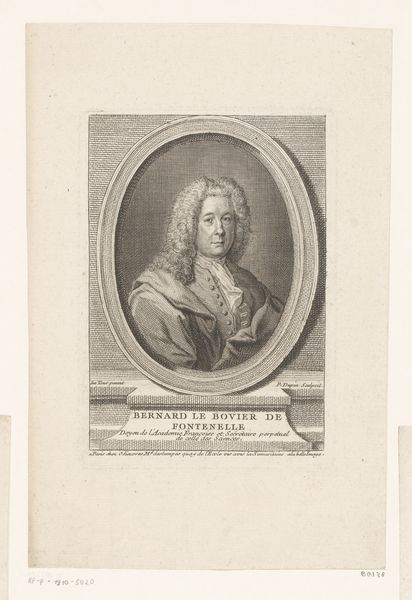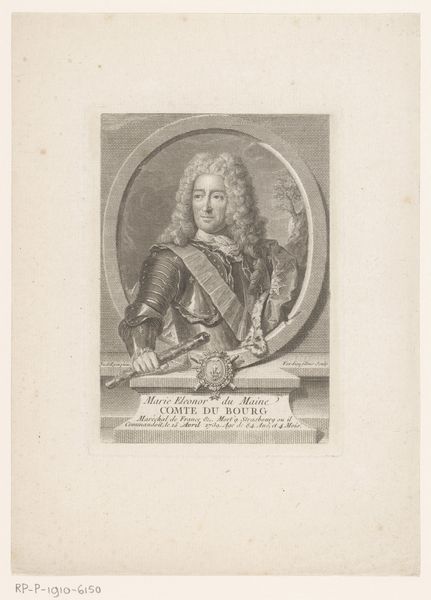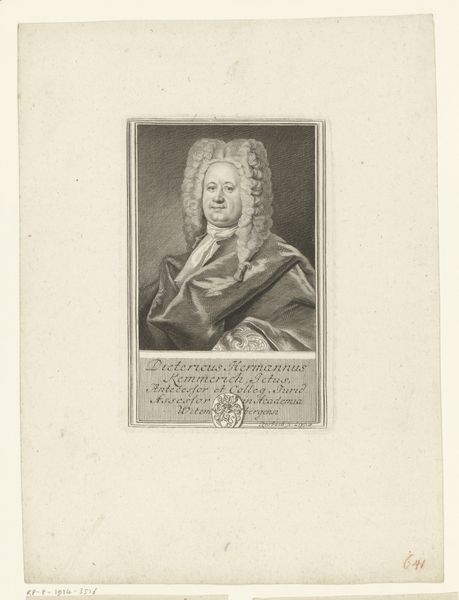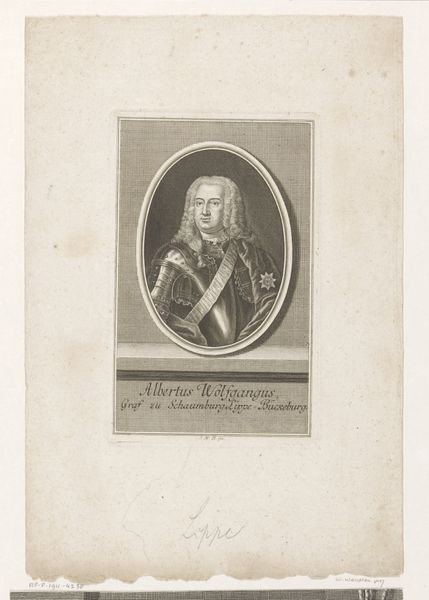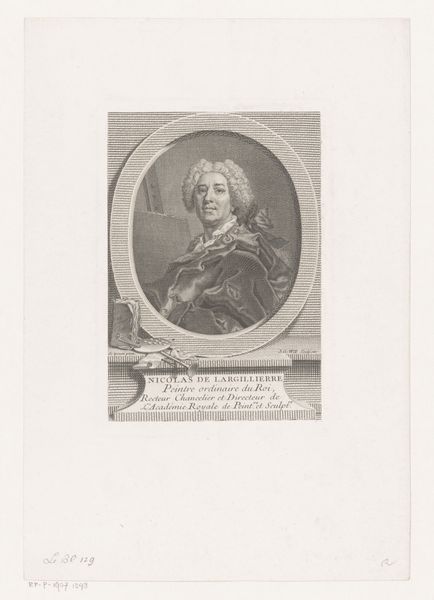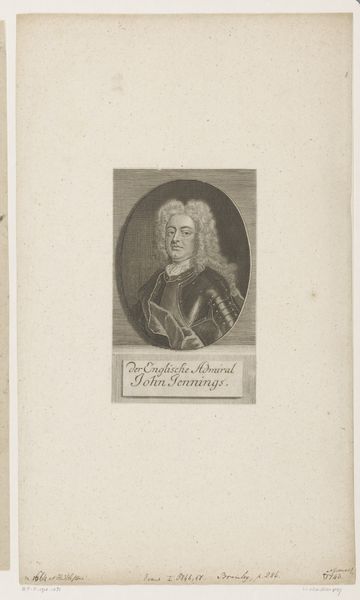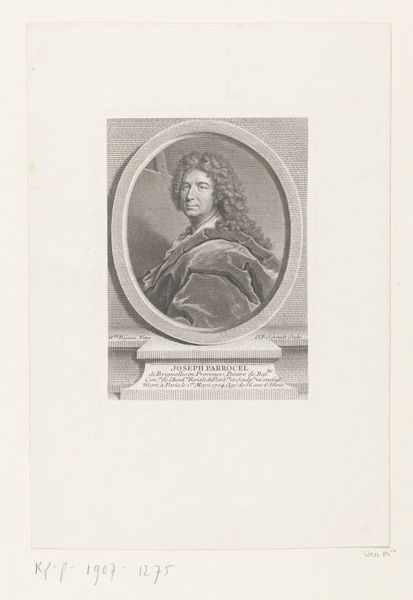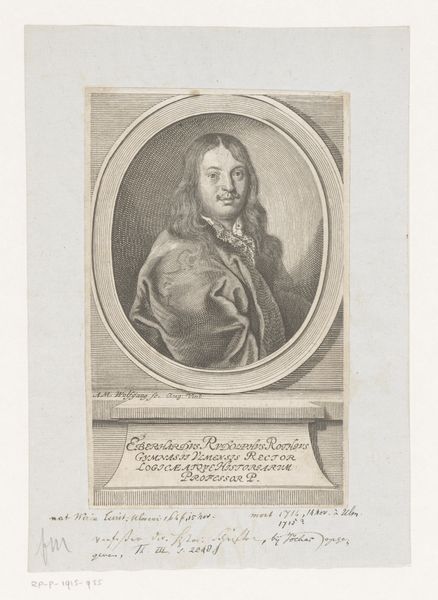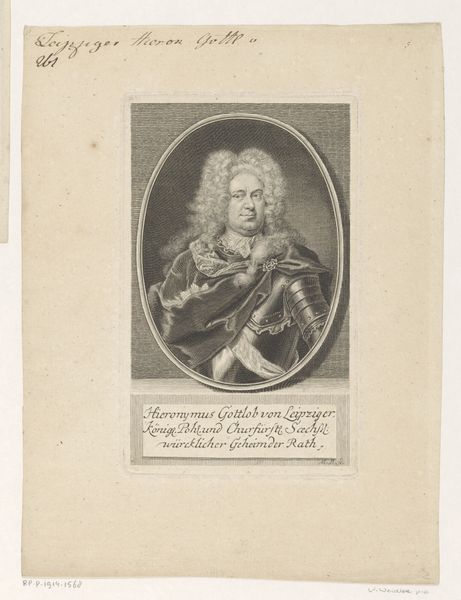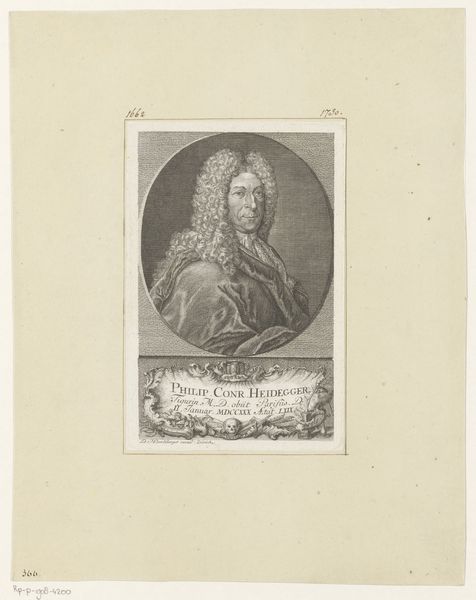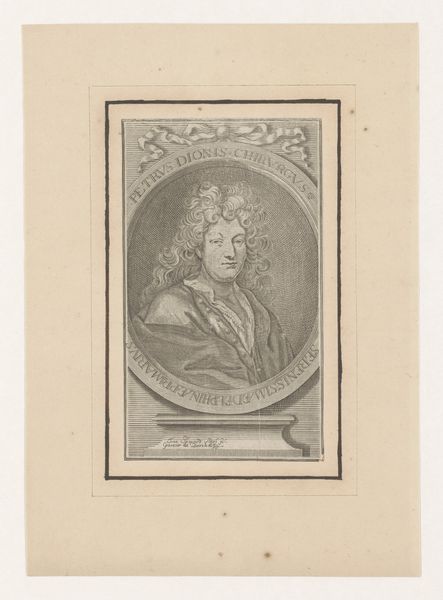
print, engraving
#
portrait
#
baroque
# print
#
old engraving style
#
history-painting
#
engraving
Dimensions: height 134 mm, width 86 mm
Copyright: Rijks Museum: Open Domain
Curator: Here we have Bernard Picart's engraving, "Portret van George I, koning van Engeland," created sometime between 1683 and 1733. What strikes you first about this Baroque portrait? Editor: There's an immediate gravity. The oval frame feels constricting, as if emphasizing the weight of his royal role. That dark stippling around the figure suggests a mood, something more than just a likeness. Curator: The engraving certainly presents George I with the expected visual tropes of power, doesn’t it? We see the armor and elaborate wig, signifiers of military strength and courtly sophistication, typical of Baroque portraiture intended to project authority. Editor: Exactly, and it’s those symbols that both draw me in and make me wary. Armor speaks of protection, defense, but it also hides. That massive wig? An emblem of status, certainly, but it becomes almost a mask, obscuring individuality behind layers of artificiality. Curator: You've pinpointed a key aspect of these state portraits. It's not necessarily about capturing the 'true' George, but about crafting and disseminating a particular image, consolidating power through visual means. Engravings like this were reproduced and distributed widely, shaping public perception. Editor: It’s fascinating how the symbolic language shifts through the ages. Armor once conveyed heroism, now it reads as somewhat theatrical. But, interestingly, that impulse remains—to control the narrative through carefully constructed visual messaging. Do you see this portrait as purely political or does Picart hint at George's person? Curator: Well, Picart had a reputation for sharp, even satirical social commentary. So, while fulfilling a commission, it’s possible he subtly infused his work with an awareness of the political machinations behind the image, perhaps in the pursed lip, or the slightly raised eyebrow? It makes you question what an official portrait really represents. Editor: It does indeed. In the end, looking at the image again, I feel the lasting resonance stems from its display of manufactured persona versus inner state; a question relevant far beyond the era of kings and wigs. Curator: A fine point. I'm struck, too, by the way visual art of any kind serves a dual purpose - to present power but, in turn, subtly betray it as well.
Comments
No comments
Be the first to comment and join the conversation on the ultimate creative platform.
